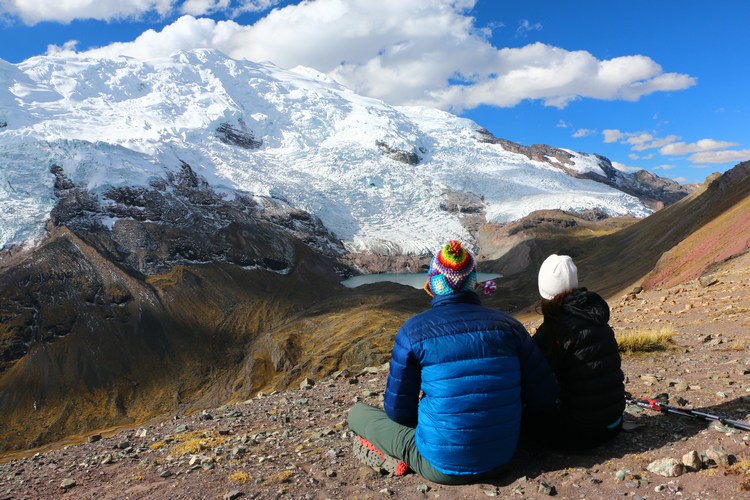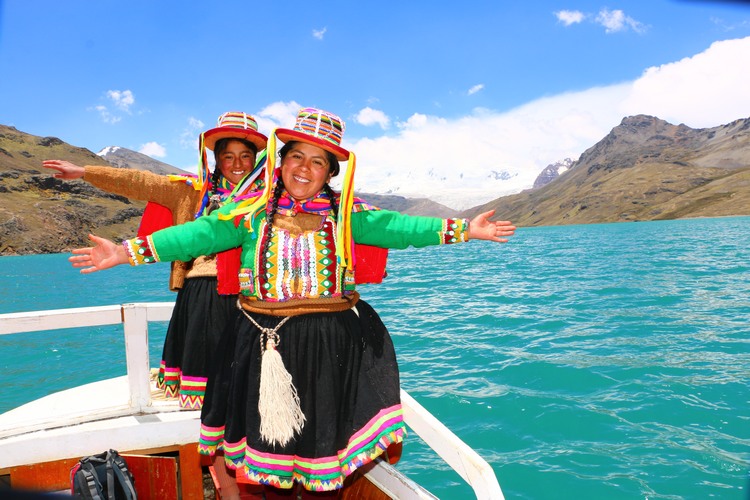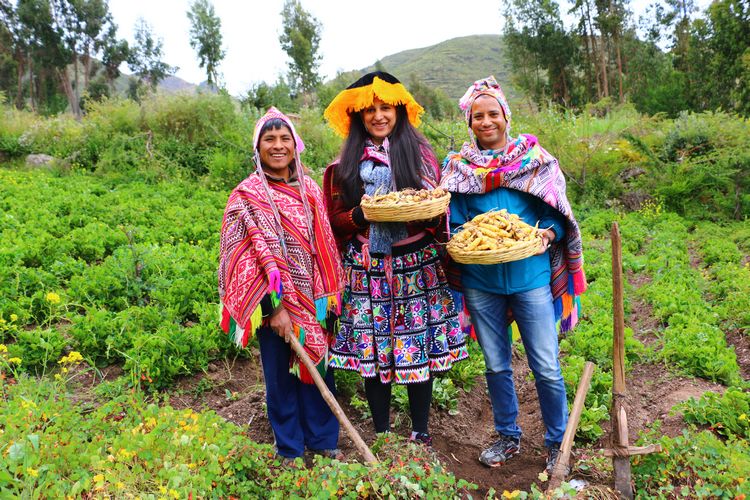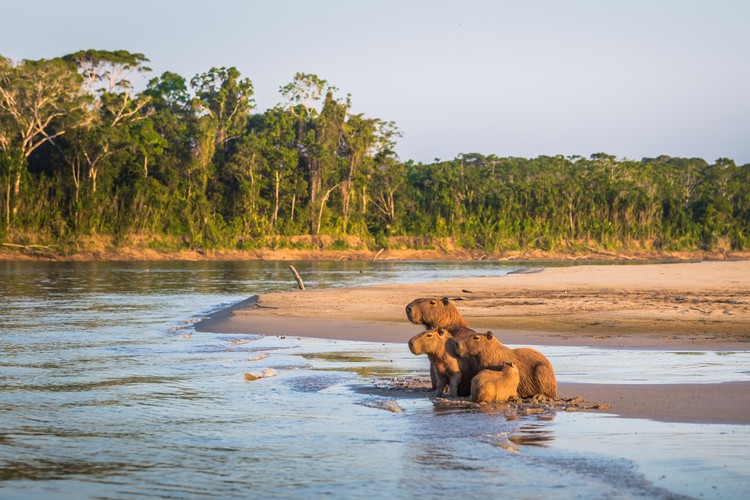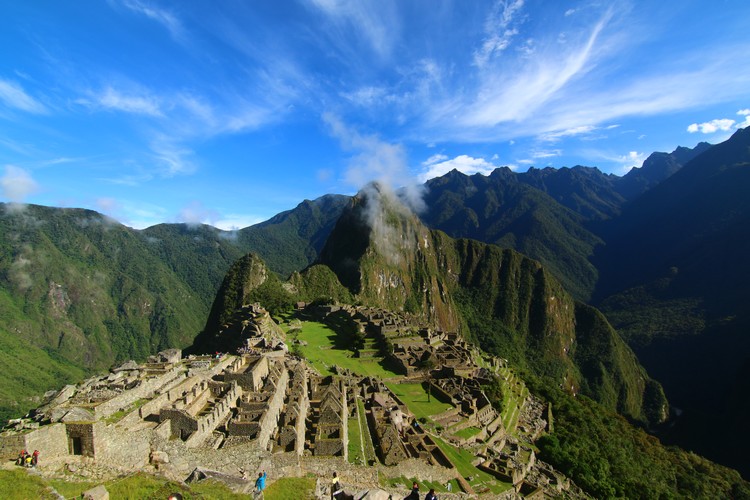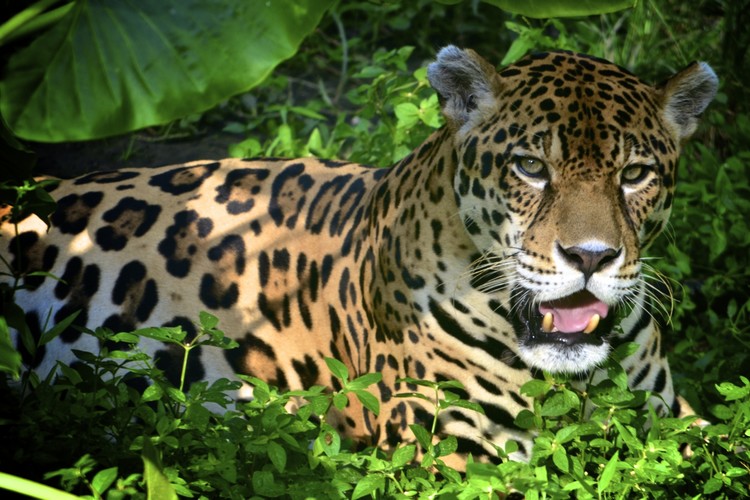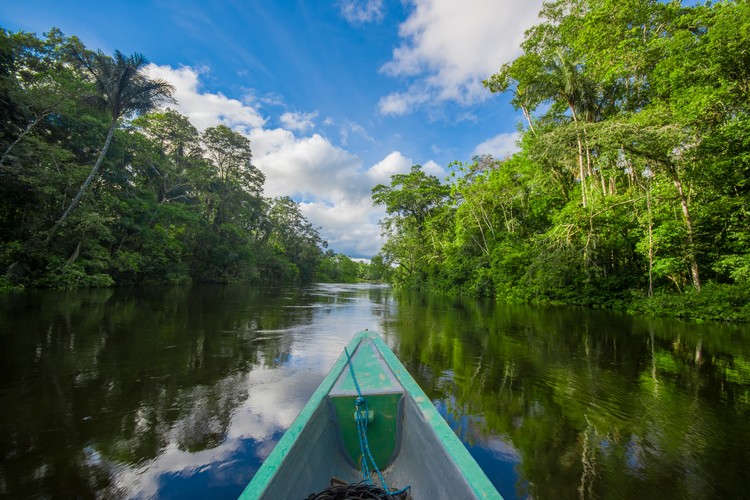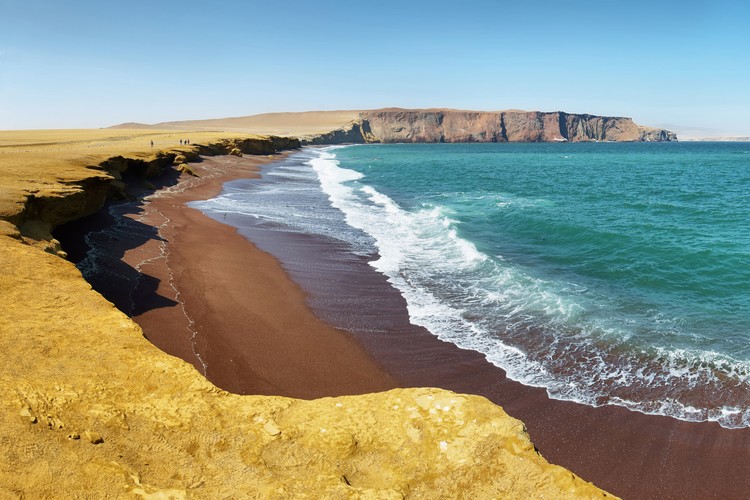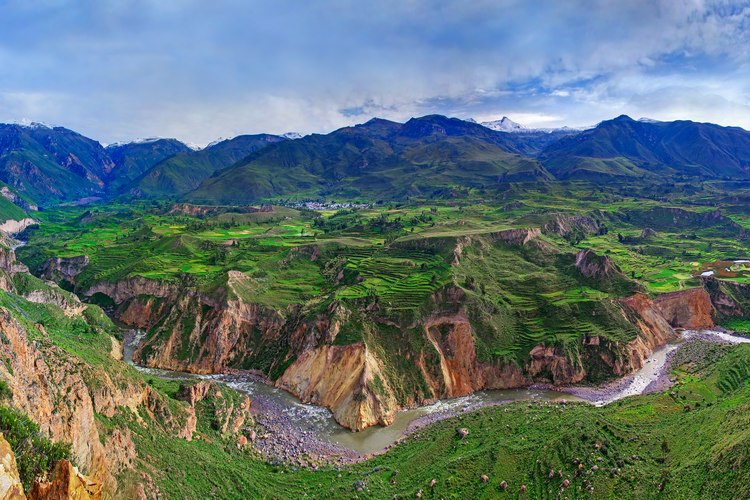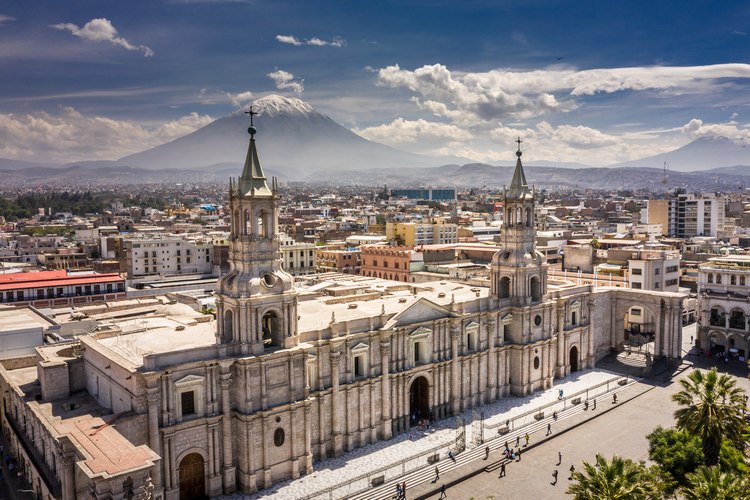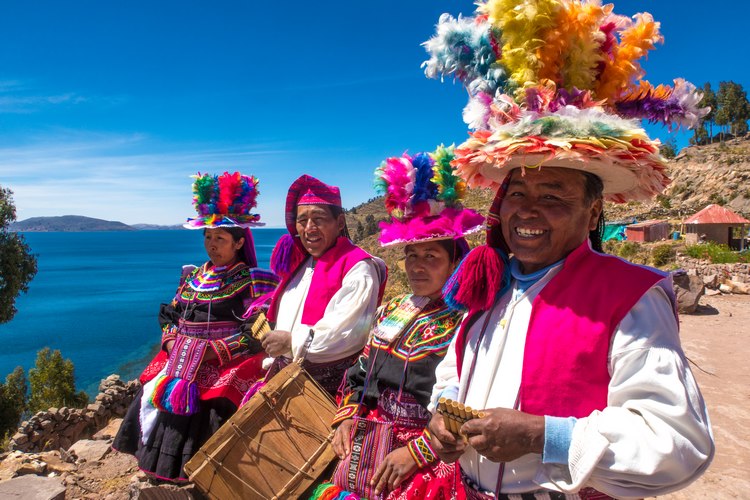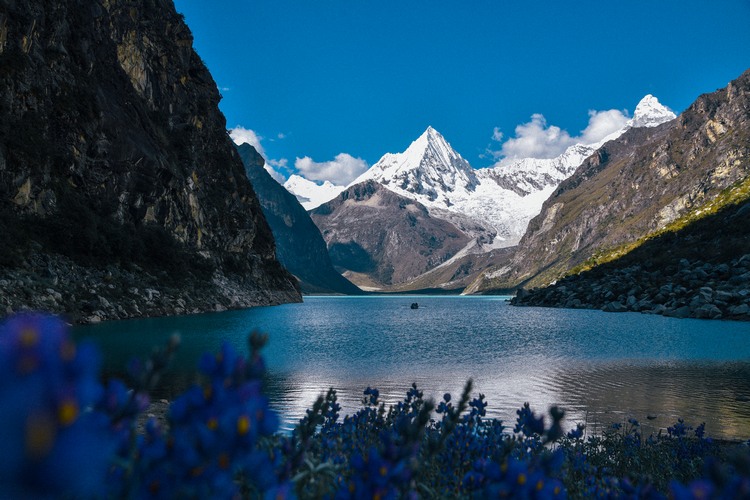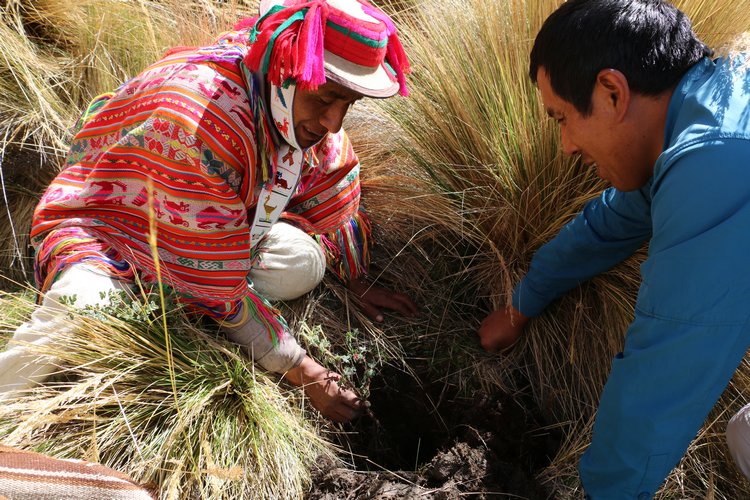What Does Ecotourism Mean?
Ecotourism, a combination of the words ‘ecology’ and ‘tourism’, refers to travel that focuses on experiencing and appreciating natural and cultural heritage while reducing environmental impact. It implies a conscious effort to promote sustainable practices, support local communities, and educate travelers about the importance of preserving fragile ecosystems and indigenous cultures.
Ecotourism can generally be understood through these lenses:
• Conservation
Sustainable tourism encourages the preservation of delicate ecosystems and endangered species. By promoting responsible travel practices, visitors are more likely to appreciate and actively contribute to the protection of Peru’s natural heritage.
• Local Community Empowerment
Ecotourism often involves close interactions with local communities in the natural areas they inhabit. This type of tourism empowers indigenous groups by providing them with opportunities for sustainable livelihoods, which serves to reduce poverty and promote cultural preservation.
• Cultural Exchange
Travelers engaging in sustainable travel have the chance to immerse themselves in the lifestyles, traditions, and rituals of local communities. This fosters cross-cultural understanding and respect, enriching both visitor and host.
• Economic Benefits
Legitimate ecotourism emphasizes community benefit. Revenue generated from so-called sustainable activities must find its way into conservation initiatives and local community development if it’s truly aimed at preserving the natural resources and cultural assets of Peru for future generations.
• Education and Awareness
Sustainable tourism serves as an educational platform, raising awareness about environmental issues such as safeguarding biodiversity, deforestation and pollution.
• Peru’s Rich Natural and Cultural Diversity: A Tapestry of Wonders
In the context of Peru, sustainable travel takes on a profound significance due to the country’s extraordinary natural and cultural diversity. Peru is the heart of South America and a land of extremes, blending the magic of the Andes mountains, the lush Amazon Rainforest, vast coastal deserts, and a rich tapestry of indigenous cultures. As the world becomes increasingly aware of the environmental and cultural challenges posed by mass tourism, sustainable travel presents a new paradigm, one where both travelers and the destinations they visit win.
A Natural Environment for Everyone
• The Andes Mountains: Majestic Peaks and High-Altitude Marvels
Running along the backbone of the country, the Andes Mountains comprise an intricate mosaic of high summits, jagged escarpments leading to deep valleys, and pristine alpine lakes. A unique range of flora and fauna, including elusive spectacled bears, condors, and a variety of high-altitude plants adapted to extreme conditions call these hills home. Then there are the sacred peaks like Huascarán and Ausangate that hold spiritual significance for indigenous communities and trekkers alike.
• The Amazon Rainforest: A Green Wonderland
Covering nearly 60% of Peru’s territory, the Amazon Rainforest is a biodiversity hotspot teeming with life. It’s home to a rich variety of wildlife, including jaguars, anacondas, colorful macaws, and countless undiscovered species. The Amazon and the Madre de Dios rivers provide access to remote areas, revealing untouched wilderness.
• Coastal Deserts and Oasis Ecosystems
Peru’s arid coastal region is punctuated by surprising oases that support unique ecosystems and vibrant communities. The Paracas National Reserve boasts otherworldly landscapes, marine life, and ancient geoglyphs etched into the desert floor. The Nazca Lines, enigmatic giant drawings carved into the desert, continue to puzzle and intrigue both scientists and travelers.
Cultural Diversity
• Ancient Civilizations: Traces of a Glorious Past
The legacy of civilizations like the Incas, Tiahuanaco, Moche, Nazca, and Chavin are literally embedded into Peru’s landscape. The Inca citadel of Machu Picchu is just one of many testaments to the architectural and engineering prowess of ancient empires. Chan Chan, the largest adobe city in the world, offers insights into the sophisticated urban planning of the Moche civilization. Chavín de Huántar, the oldest archaeological site in Peru, is a mysterious temple complex that reveals an understanding of astronomy and art. These are just a few of the archeological wonders Peru offers the world.
• Indigenous Communities: Guardians of Traditional Wisdom
Peru is home to numerous indigenous groups, each with its distinct language, traditions, and way of life. Visiting communities like the Quero and Aymara provides an opportunity to learn about ancient farming techniques, textile craftsmanship, and spiritual beliefs. From the traditional Andean dress to the intricate weavings of the Shipibo people, Peru is a living cultural museum.
Peru’s vibrant living cultures are showcased through colorful folkloric dances, music, cuisine, and festivals, such as Cusco’s Inti Raymi, which celebrates Andean cosmology and the connection between humans and the natural world.
Top Destinations for Sustainable Tourism
Manu National Park
– Pristine Amazonian Wilderness Immersion
Manu National Park, a UNESCO World Heritage Site, offers an unparalleled opportunity to explore the heart of the Amazon Rainforest in its purest form. Vast expanses of untouched wilderness, teeming with diverse flora and fauna, create an immersive experience for ecotourists seeking an authentic connection with nature.
– Wildlife Spotting and Birdwatching
As one of the most biologically diverse places on planet Earth, Manu is heaven for wildlife enthusiasts. The park is home to an astonishing array of species, including jaguars, tapirs, giant river otters, and over 1,000 bird species. Guided excursions allow travelers to embark on thrilling wildlife-spotting adventures while adhering to ethical viewing practices.
– Cultural Interactions with Indigenous Tribes
Beyond its natural wonders, Manu offers a chance to engage with indigenous communities that have inhabited the rainforest for generations. Travelers can learn about traditional knowledge, rituals, and sustainable practices from these communities, fostering cross-cultural understanding and appreciation.
Machu Picchu and the Sacred Valley: Balancing Heritage and Sustainability
– Machu Picchu
‘The Lost City of the Incas’ is a testament to the genius of ancient civilizations. Ecotourists can marvel at the intricate stone structures, terraced fields, and celestial observatories by using the designated paths at Machu Picchu Park and disposing of waste in the clearly marked bins.
– Sustainable Inca Trail
The renowned Inca Trail is now operated according to a strict code of environmental and cultural preservation. Certified tour operators offer guided hikes that minimize disruption to sensitive ecosystems while providing meaningful experiences for travelers. If you want a bit more challenge and to go off the beaten path, also consider the Salkantay Trek to Machu Picchu.
– Sustainable Trekking Routes
Exploring the surrounding Sacred Valley through sanctioned trekking routes ensures that cultural and natural treasures are preserved for years to come. Hiking along well-maintained trails in Ollantaytambo, for instance, allows visitors to witness breathtaking landscapes and ancient ruins while minimizing their impact on the environment.
– Local Communities and Their Eco-Friendly Initiatives
The communities residing in the Sacred Valley have embraced sustainable tourism practices to preserve their cultural heritage. Visitors can engage with local artisans, partake in traditional workshops, and support community-led initiatives that promote environmental conservation and socioeconomic development.
– Low-Impact Hiking to the Lares Hot Springs
Nature enthusiasts seeking tranquility should consider a low-impact hike to the Lares Hot Springs. This lesser-known route offers stunning views of snow-capped peaks and glacial lagoons, along with the chance to immerse in the warmth of Andean communities. The hike concludes at the Lares Hot Springs, where trekkers can unwind in natural thermal baths.
– Local Ecotour Company
Kallpa Travel is a sustainable travel agency in the Sacred Valley that specializes in responsible tourism experiences. By partnering with local communities, the agency can offer a variety of options for eco-tourists interested in learning more about traditional cultures.
Tambopata Reserve: Unveiling Rainforest Wonders and Research
– Rainforests, Rivers, and Lakes
Tambopata Reserve showcases an astonishing range of ecosystems, from lush rainforests and winding rivers to serene oxbow lakes. This diversity provides a habitat for countless species, including capybaras, caimans, and elusive jaguars, making it a paradise for nature enthusiasts and photographers.
– Research and Conservation Projects
The reserve serves as a hub for scientific research and conservation efforts. Visitors have the unique opportunity to engage with field researchers, participate in data collection, and contribute to ongoing projects aimed at understanding and protecting the rainforest’s delicate balance.
– Canopy Walks and Wildlife Observation
To experience the rainforest from a different perspective, eco-tourists can embark on canopy walks that take them high above the forest floor. These elevated pathways offer unparalleled views of the canopy’s inhabitants, including colorful birds, monkeys, and fascinating insect life.
The Amazon River and Tributaries
– Responsible River Cruises
Sustainable river cruises are popular for experiencing the Amazon with minimal ecological impact. They prioritize environmentally friendly practices, such as waste management, energy conservation, and low-impact docking. These cruises offer guided rainforest excursions to spot wildlife, learn about the ecosystem, and engage with local communities.
– Wildlife and Biodiversity
The Amazon Rainforest harbors a diverse range of unique plant and animal species. Visitors can spot pink river dolphins, capybaras, macaws, jaguars, and more. Guided tours offer insights into the rainforest’s intricate ecology and the vital role each species plays in maintaining its balance.
– Cultural Experiences
The Amazon River and its tributaries run through indigenous communities with a strong connection to the land and its resources. Travelers can engage in cultural exchanges, and learn about customs, rituals, and traditional permaculture practices from residents. A trip to a village offers the chance to witness traditional crafts, share meals, and deepen understanding of the coexistence between human communities and the natural world.
– Eco-Tourism Projects
Eco-tourism projects in the Amazon can help empower local communities. They provide alternative livelihoods, reducing harm to the environment. By participating, travelers contribute to community development, conservation, and rainforest protection.
– Education and Conservation
Guided tours of the Amazon River educate about rainforest challenges—deforestation, climate change, and illegal resource extraction. The excursions emphasize conservation and work to support local initiatives maintaining the Amazon’s biodiversity.
– Adventure and Exploration
Travelers can hike through the rainforest, paddle along tranquil tributaries, and fish for piranhas. These activities, apart from being entertaining, seek to foster a deep connection to the natural world, inspiring appreciation for the beauty and fragility of the Amazon.
Paracas National Reserve: A Coastal Desert Oasis of Biodiversity and Beauty
Along Peru’s southern coast, one finds the Paracas National Reserve, a stark yet breathtaking juxtaposition of arid desert landscapes and vibrant marine ecosystems. This unique conservation area offers an exceptional opportunity for travelers to connect with nature, witness the resilience of life in extreme conditions, and support sustainable practices that avoid harm.
– Desert Majesty and Geoglyphs
The reserve displays the splendor of coastal deserts, with windswept dunes, rugged cliffs, and vivid twilight hues. Ancient geoglyphs, etched on the desert floor, depict animals, humans, and intricate designs, providing insights into the rituals and beliefs of past cultures.
– Marine Marvels and Biodiversity
The reserve’s coastal region transforms into a vibrant marine environment, abundant with life. The cold Humboldt Current brings the nutrient-rich waters that foster marine biodiversity.
Visitors get to watch sea lions basking in the languorous sun, seabird colonies including Humboldt penguins, and, with a bit of luck, spot the jubilee of dolphins and whales in the Pacific.
– Birdwatching Paradise
Paracas is a birdwatcher’s paradise, with coastal cliffs, wetlands, and beaches hosting a diverse array of bird species. The reserve is home to Peruvian pelicans, flamingos, cormorants, and more. The interaction between coastal and marine environments creates a rich feeding ground for these amazing birds.
– Responsible Tourism Initiatives
Paracas National Reserve typifies responsible tourism. Tours follow strict guidelines to minimize human impact on fragile ecosystems, preserving wildlife and delicate habitats. Eco-friendly practices, like waste reduction and eco-lodges, contribute to preserving this unique area.
– Conservation Efforts and Scientific Research
The reserve is also a hub for scientific research. Experts study the unique adaptations of plants and animals to the desert environment and the vital role the reserve plays in maintaining ecosystems. By visiting, travelers directly contribute to these conservation initiatives.
– Cultural Insights and Local Communities
Exploring Paracas lets travelers engage with local communities and discover their historical connections to the land and sea. Coastal fishing villages provide insights into traditional fishing practices and a way of life shaped by nature’s forces.
– Outdoor Adventure and Photography
Paracas National Reserve offers diverse landscapes for outdoor activities like hiking, photography, and sandboarding on the dunes. Guided tours allow adventurous travelers to explore the reserve’s varied environments, from desert to coastline.
Colca Canyon: Exploring the Majestic Depths
Colca Canyon’s dramatic landscapes are a testament to the powerful forces that have shaped the Earth’s surface over millions of years. Towering walls of rock, carved by the Colca River, plunge to depths that are twice as deep as the Grand Canyon in the United States. The sheer magnitude of the canyon’s dimensions is a sight to behold, providing a humbling perspective on the Earth’s geological history. As one of the world’s deepest canyons, it offers natural beauty, cultural heritage, and sustainable tourism opportunities.
– Andean Condor Sanctuary
Colca Canyon is renowned for being a prime location to witness the iconic Andean condor in flight. Travelers gather at designated viewpoints, such as Cruz del Condor, to witness these raptors as they glide on currents of thermal air. These impressive carrions navigate the canyon’s depths with ease, having the broadest wingspan of any bird on earth.
– Traditional Villages and Cultural Heritage
The canyon is home to traditional Andean villages where indigenous communities have maintained their way of life for centuries. Travelers can engage in cultural exchanges, learn about traditional farming practices, and witness artisanal crafts in the making.
– Sustainable Tourism Initiatives
The communities surrounding Colca Canyon have embraced sustainable tourism practices to preserve their cultural heritage and the natural environment. Lodging options often prioritize eco-friendly practices, utilizing solar power and sustainable building materials.
– Responsible Trekking Opportunities
Trekking through Colca Canyon allows travelers to immerse themselves in natural beauty while leaving no trace. Guided treks take hikers through terraced fields, across suspension bridges, and along trails that wind through the canyon’s depths.
– Other Adventure Activities
Beyond trekking, Colca Canyon offers opportunities for adventure enthusiasts, including mountain biking, horseback riding, and rafting along the Colca River.
– Hot Springs and Relaxation
After a day of exploration, travelers can rejuvenate in the natural hot springs that dot the area surrounding the canyon. These geothermal oases provide a tranquil setting to unwind, surrounded by the rugged beauty of the Andes.
Arequipa: Exploring Colonial Charm
Not far from the Colca Valley, Arequipa offers a captivating blend of colonial architecture, cultural heritage, and breathtaking natural landscapes. From the historic charm of the ‘White City’ to the awe-inspiring volcanoes in the distance, this region beckons travelers to delve into its rich history, engage with local communities, and immerse themselves in the grandeur of the Andean highlands.
– Historic Arequipa
Arequipa is often referred to as the ‘White City’ due to its striking colonial buildings made from white volcanic stone. The historic city center is a UNESCO World Heritage Site, characterized by well-preserved Spanish colonial architecture, charming plazas, and ornate churches.
– Santa Catalina Monastery
Within the heart of Arequipa lies the Santa Catalina Monastery, a sprawling complex that provides a glimpse into the city’s colonial past. The monastery’s vibrant facades, cloistered courtyards, and maze-like corridors offer a journey through time and history.
– Cultural Encounters and Local Traditions
Arequipa is a melting pot of indigenous, Spanish, and mestizo cultures. Visitors can explore bustling markets, where traditional Andean textiles, crafts, and local delicacies are on display. Engaging with artisans and witnessing traditional weaving techniques offers insights into the region’s cultural heritage.
Lake Titicaca: Exploring the Enchanting Waters and Cultures of the Andes
Perched high in the Andes Mountains on the border between Peru and Bolivia, Lake Titicaca is among the world’s highest navigable lakes. The shimmering blue depths are encircled by distant mountains, a tranquilizing escape from a frenetic world.
As the cradle of ancient civilizations and a hub of sustainable tourism initiatives, Lake Titicaca offers an unforgettable journey into the Andean highlands. The crisp mountain air and friendly islanders might just be what the doctor ordered.
– Man-Made Islands of Uros
The iconic floating islands of Uros speak to human ingenuity and adaptation. These totora reed islands have been peopled since times untold. Travelers can visit the Uros communities, learn about their unique way of life, and even spend a night in a traditional reed-thatched dwelling.
– Taquile Island’s Textile Traditions
Taquile Island, known for color textiles, offers visitors the chance to learn about traditional weaving techniques. These intricate creations tell the story of culture and identity, and travelers can even participate in workshops to create their very own weavings.
– Amantani Island’s Cultural Exchange
Amantani Island is known for its authentic homestay experiences, where visitors can immerse themselves in the daily life of local families in one of eight hamlets. These cultural exchanges provide insight into traditional customs, agricultural practices, and festive celebrations. Atop the island, at over 300 meters above the lake, are the ruins of the Tiahuanaco Empire where, once upon a time, offerings to the gods of nature were made.
– Scenic Hikes and Views
Trekking on the islands and along the shores of Lake Titicaca presents opportunities for breathtaking panoramic views of the lake and surrounding landscapes. The combination of serene waters, snow-capped peaks, and traditional villages creates quite the backdrop.
– Sustainable Tourism Initiatives
Communities around Lake Titicaca have embraced sustainable tourism practices to preserve their natural environment and cultural heritage. Eco-lodges and responsible tour operators work to minimize ecological impact while providing authentic and meaningful experiences for visitors.
– Preserving Cultural Heritage
Sustainable tourism practices around Lake Titicaca directly support local economies and cultural preservation. Visitors’ contributions often fund community projects, schools, and initiatives aimed at safeguarding traditional practices and languages.
Huaraz and the Cordillera Blanca: Trekking into the Heart of Andean Beauty
Huaraz is the gateway to the Cordillera Blanca, a rugged range of icy nevados, turquoise lakes, and picturesque valleys, and serves as a starting point for routes that connect remote Andean villages and ancient sites such as Chavín de Huántar. This region is a paradise for nature people, offering intense trekking, cultural immersion, and responsible tourism opportunities.
– Multiculti Encounters
While exploring Huaraz and its surroundings, travelers have the chance to engage with local indigenous communities. Visits to traditional Andean villages offer insights into rural life, ancient agricultural practices, and artisanal craftsmanship.
– Cordillera Blanca
This range boasts some of the world’s highest tropical peaks, including Huascarán, Peru’s tallest mountain. These majestic summits, studded with glaciers and alpine meadows, create that rare milieu that draws trekkers, climbers, and photographers from around the globe.
– Community-Based Tourism Initiatives
Sustainable tourism initiatives in Huaraz emphasize community engagement and equitable profit-sharing. Travelers can opt for guided tours that support local economies and empower residents. Staying in community-run lodges and participating in cultural exchanges contributes to the preservation of traditions and the well-being of local communities.
– Conservation and Ecotourism
Sustainable trekking practices, like ‘leave no trace’, help minimize environmental impact, and local organizations work to protect fragile ecosystems and promote responsible tourism.
– Breathtaking Lagunas
This region is sprinkled-over with crystal-clear alpine lakes known as lagunas. These turquoise gems are found in some of the most unbelievable places, amidst titanic peaks and sprawling meadows. Lake Parón, Lake 69, and Lake Churup are among the most famous and accessible.
– Trekking Adventures for All Levels
Huaraz and the Cordillera Blanca offer an array of trekking routes for any skill level, from leisurely walks to challenging high-altitude expeditions. Popular treks include the Santa Cruz Trek, Huayhuash Circuit, and Alpamayo Circuit. These trails wind through pristine valleys and offer one the chance to witness unique flora and fauna.
– Other Adventure Activities
For those seeking even more adrenaline-packed experiences, Huaraz offers opportunities for kayaking, mountaineering, ice climbing, and rock climbing. These activities allow adventurers to challenge themselves in breathtaking alpine climbs.
– Photography and Natural Beauty
Huaraz and the Cordillera Blanca provide a photographer’s dream, with ever-changing lighting conditions that enhance the dramatic landscapes. From sunrise over snow-capped peaks to colorful wildflowers in the valleys, every moment is a visual feast.
– Chavin de Huantar
This archaeological site near Huaraz is a significant prehistoric ruin from the Chavin culture, dating back to around 1200 BC. It showcases intricate stone carvings and advanced architectural techniques, offering insights into one of Peru’s oldest and most influential civilizations. Designated a UNESCO World Heritage site in 1985, it features terraces, squares, underground passages, the Lanzón Gallery, and the Tello Obelisk, all adorned with intricate carvings reflecting Chavin’s religious and cultural beliefs.
Low Impact Travel Tips:
As discerning travelers, leaving the places we visit as pristine as when we arrived is imperative. Practicing low-impact travel can greatly contribute to the conservation of these incredible sites. Here are a few suggestions:
- Reusable Bags: Always carry a reusable bag with you. They will come in handy in Peru, especially considering that many items are sold ‘loose’ in markets, that is, without packaging.
- Water Bottles and Filters: Consider bringing a reusable water bottle and a portable water filter. Not only will this save you money, but it also reduces the amount of single-use plastic bottles.
- Public Transportation: When possible, opt for public transportation. It’s an eco-friendly alternative to private vehicles and gives you the chance to experience the area like a local. Another great option is walking or cycling whenever possible.
- Support Local Artisans: Instead of buying mass-produced souvenirs, consider purchasing handmade textiles and crafts from local makers. These items incur a lower environmental cost. Moreover, they carry the essence of local culture and heritage, making them a meaningful and responsible memento of your trip.
- Sound Sleep: Try to stay in traditional dwellings made from sustainable materials.
Remember, every small step towards preserving our environment counts. Let’s travel responsibly and eco-friendly.

